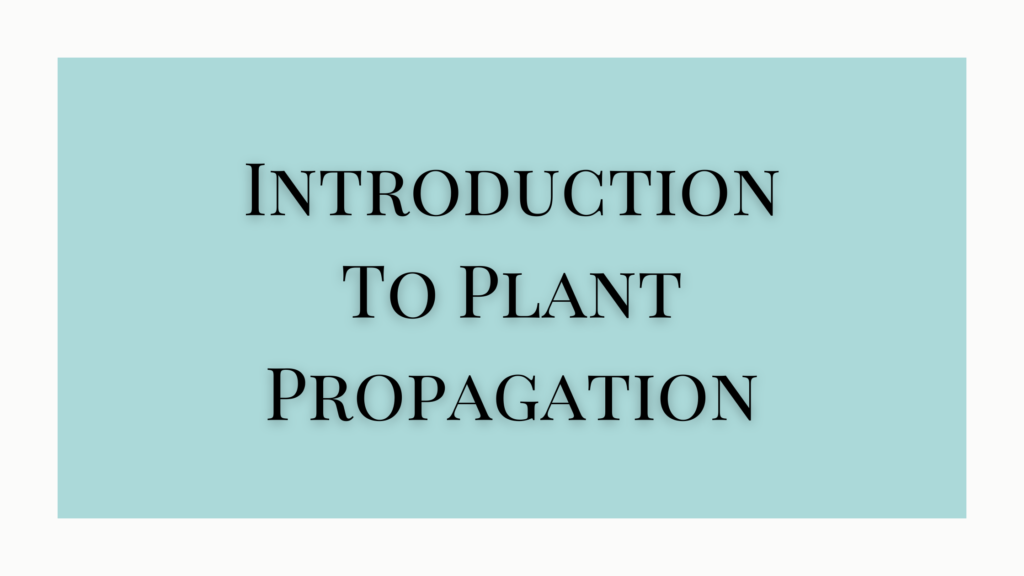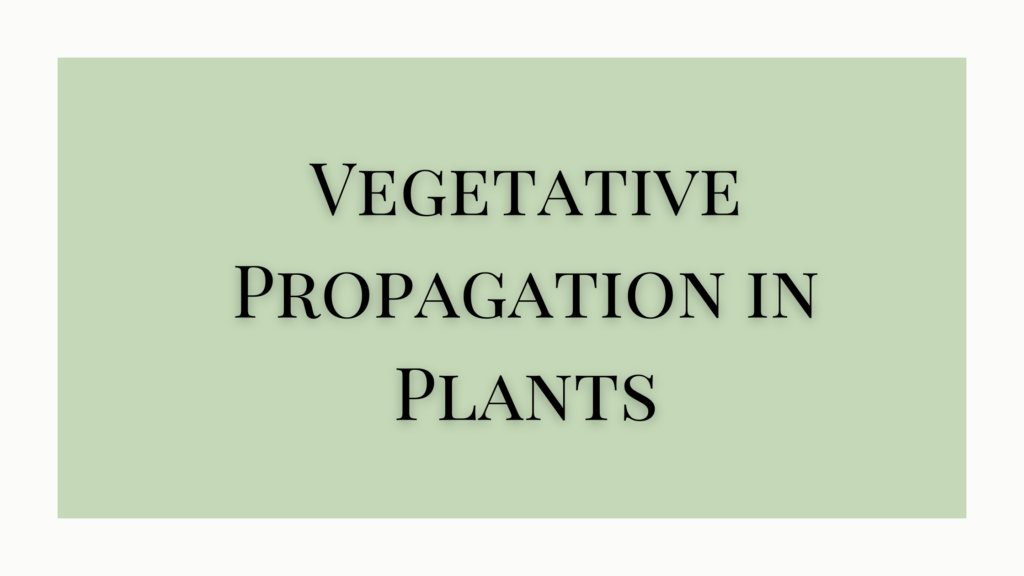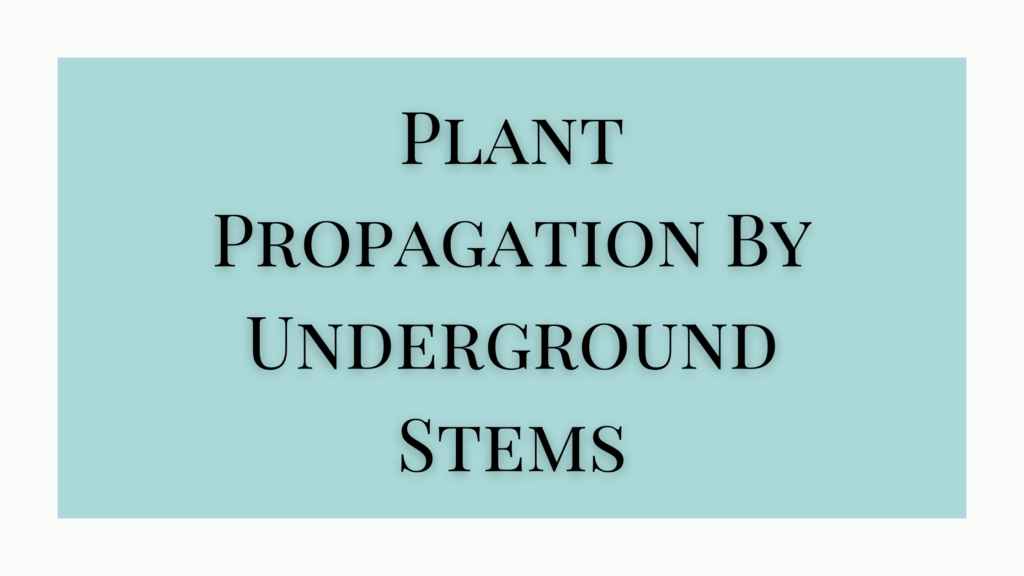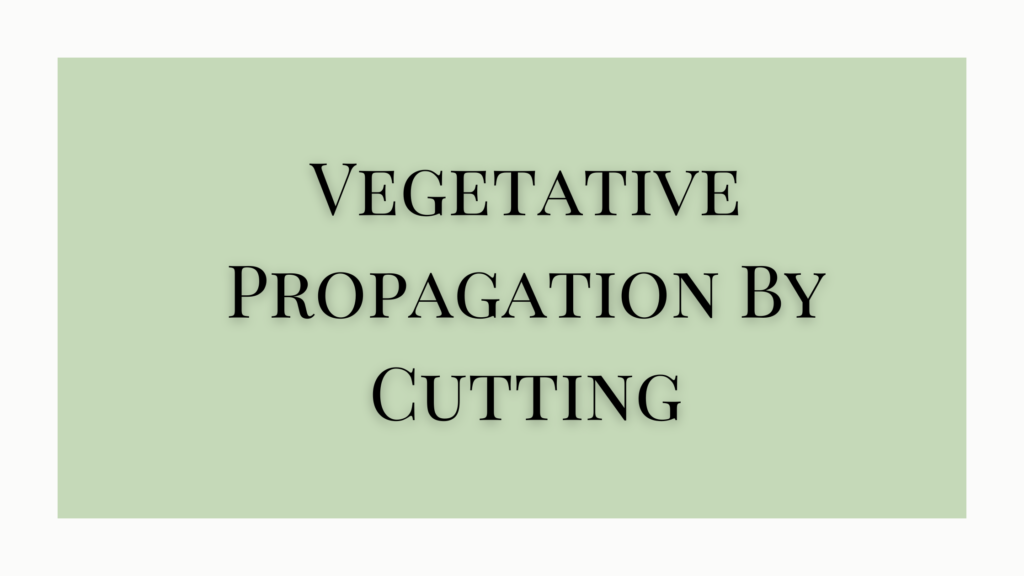Plant propagation can be defined as the multiplication, perpetuation, or reproduction of plant species. Plant propagation’s basic objective is producing offspring that will be exactly similar to the original plant. There are two basic methods of plant propagation- sexual and asexual.
Propagation of plants is the fundamental occupation of mankind. Civilization may have started when ancient man learned to plant and grow kinds of plants that fulfilled nutritional needs for himself and his animals. As civilization advanced he added to the variety of plants cultivating not only additional food crops but also those that provided fibers, medicine, ornamental plants, etc.
The presence of plants on earth is essential for the survival of animals. Two of the most important functions of plants are to provide us with food materials and to supply oxygen for breathing. In addition, plants provide us with fuel, gas, oils, timber, drugs, medicine, latex, waxes, essential oils, and perfumes.
Agriculture began 10,000 years ago when ancient people started domesticating certain plants growing around them. Improvements were made through continuous selection and maintenance of better plant types. These cultivated plants originated mainly by three methods.
- Direct selection from wild species by man, evolved into types that differ from their wild relatives.
- Hybrids are produced by changes in chromosome numbers. They are unique to cultivation and have no wild relatives—Eg. Maize, wheat, tobacco, pears, etc.
- Those which occur naturally as monstrosities (abnormally formed) although adapted to native environments. They may be useful to man.
Most cultivated plants either will be lost or will revert to less desirable forms unless they are propagated under controlled conditions that preserve unique characteristics that make them useful. As new kinds of plants become available, the development of knowledge to maintain them has been learned throughout history.
In other words, as new advancements in propagation techniques develop, the number of plants becomes available for increased cultivation.
The sequence of developments in plant propagation includes the invention of budding, grafting, glass houses, mist chambers for cuttings of cuttings, root-inducing chemicals, hybrid seeds, tissue culture, artificial seeds, etc.
Sexual Propagation in Plants
Sexual propagation is the propagation through seeds, which are a result of fusion of gametes and embryo development. A seed is a mature ovule that has a young plant in a dormant stage.
The basic parts of a seed are the embryo, the food reserve, and the seed coat. The embryo is a miniature plantlet which is the result of fertilisation. In most plant species, the embryo in a mature seed is differentiated into two growing points- the plumule and radicle.
Endosperm is the food reserve that keeps the dormant embryo viable. It is located between the embryo and seed coat. It is triploid. The seed coat is the outermost part of the seed. This double-layered seed coat protects the embryo inside. The two layers of the seed coat are the testa and the inner tegmen.
The seeds germinate under favorable conditions or when certain factors are fulfilled. These factors include light, water, temperature, and oxygen. Seeds of certain plants undergo a dormancy period where they are viable but choose to be temporarily inactive. There could be several reasons for this dormancy. Some common reasons for dormancy include unfavorable weather conditions, unavailability of nutrients, etc.
To initiate germination, plant propagators may use various methods to break the seed dormancy. They use external materials or solutions to break the hard seed coat and soften it to initiate termination. Once the seeds germinate, they are transplanted to a suitable soil medium indoors, for further growth. When they attain a certain growth stage, they are once again transplanted to the outside conditions.
Advantages of Sexual Propagation in Plants
- It is the only method in certain plants.
- Seedlings are comparatively cheaper and easier to raise than vegetatively propagated materials.
- Seeds are a must in plant breeding programs to raise F1 generation.
- Seeds are convenient for storing plants for a longer duration.
- Sexual propagation leads to more vigorous progenies.
- It helps contain disease transmission by viruses.
Disadvantages of Sexual Propagation in Plants
- Sexual propagation is more time-consuming than asexual propagation.
- The plants could lose their viability, generation after generation.
- Seedlings could produce inferior plants.
- Offsprings may not get the desirable traits.
- Seedlings have a prolonged juvenile phase.
- It is not a good way to improve the quality of existing plants.
Asexual Propagation in Plants
Asexual propagation in plants involves a single parent without any fusion of the gametes. Some parts of these plants are selected to grow a new plant or several plants. Common plant parts that are used for asexual propagation are stem cuttings, leaf cuttings, underground stems, roots or their modifications, etc.
These cuttings or plant parts are usually directly planted in the growing medium to grow into new plants. In some cases, the cuttings are planted on branches of the plants through grafting or budding to grow a mixed variety of plants. Here the host plant grows as it is but will have some branches from the other plant as it grows.
Root and leaf cuttings are directly planted in the medium. Once they have roots, they are transplanted into another medium in larger pots as suitable. Bulbs and corms growing from the roots of certain plants are separated and planted individually.
Conclusion
Thus there are different types of plant propagation methods. Each type has its advantages and disadvantages. The growing medium varies with the type of propagation method. The rate of plant growth also differs with each type of propagation. Suitable propagation methods are chosen according to the plant and the requirement since many plants can be propagated using multiple methods.
References
- Plant Propagation
- Plant Breeding Principles and Methods: B.D.Singh
- Plant Propagation: M. K. Sadhu




